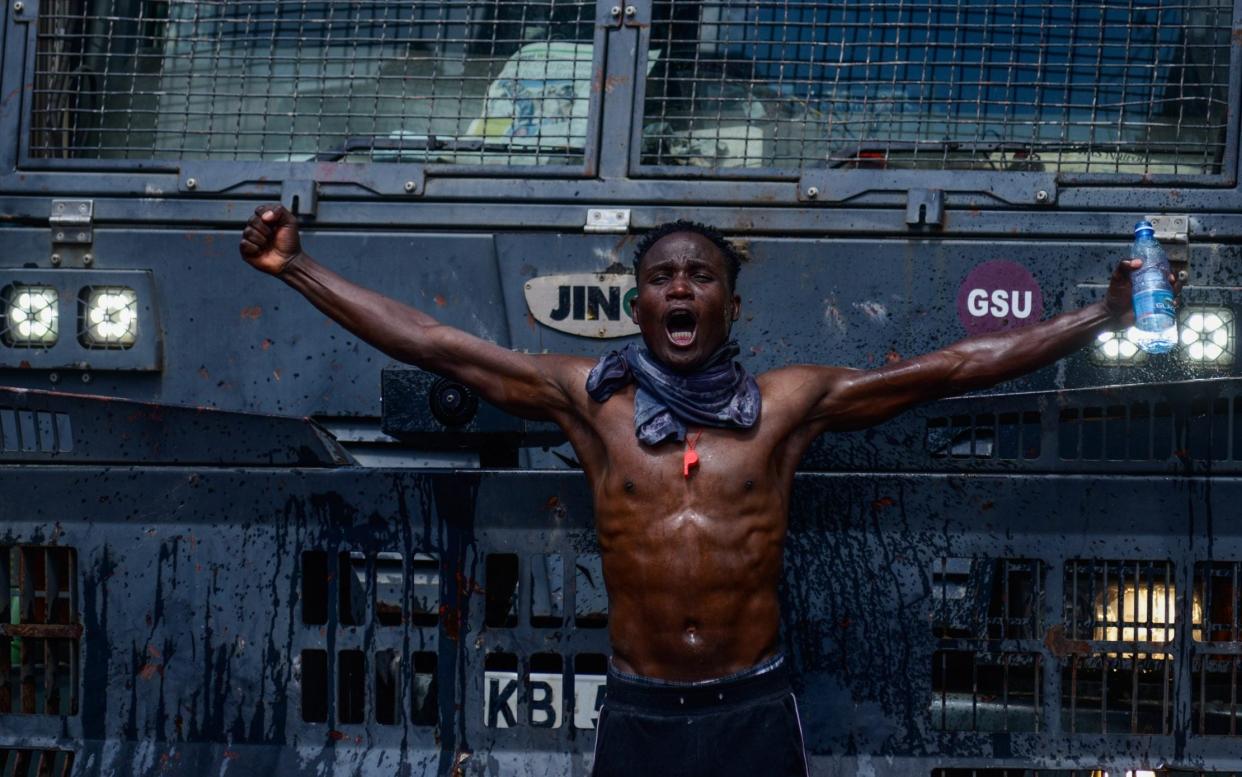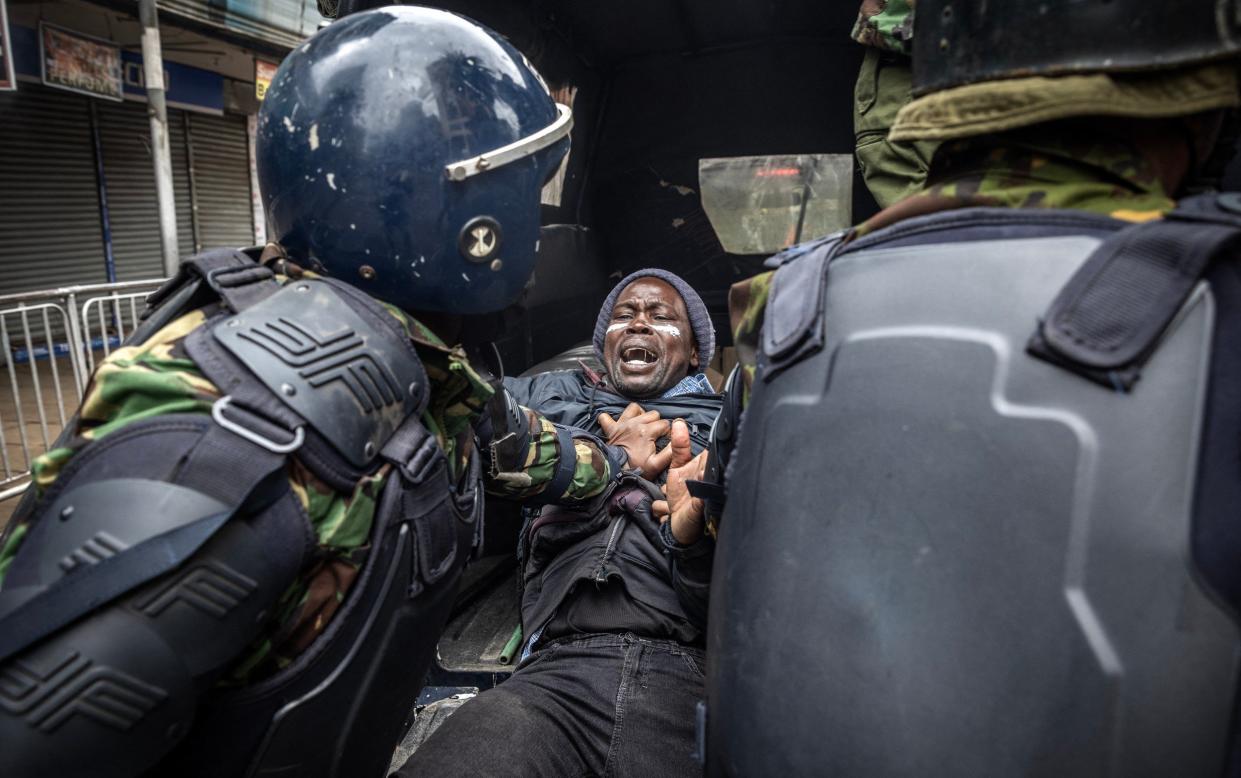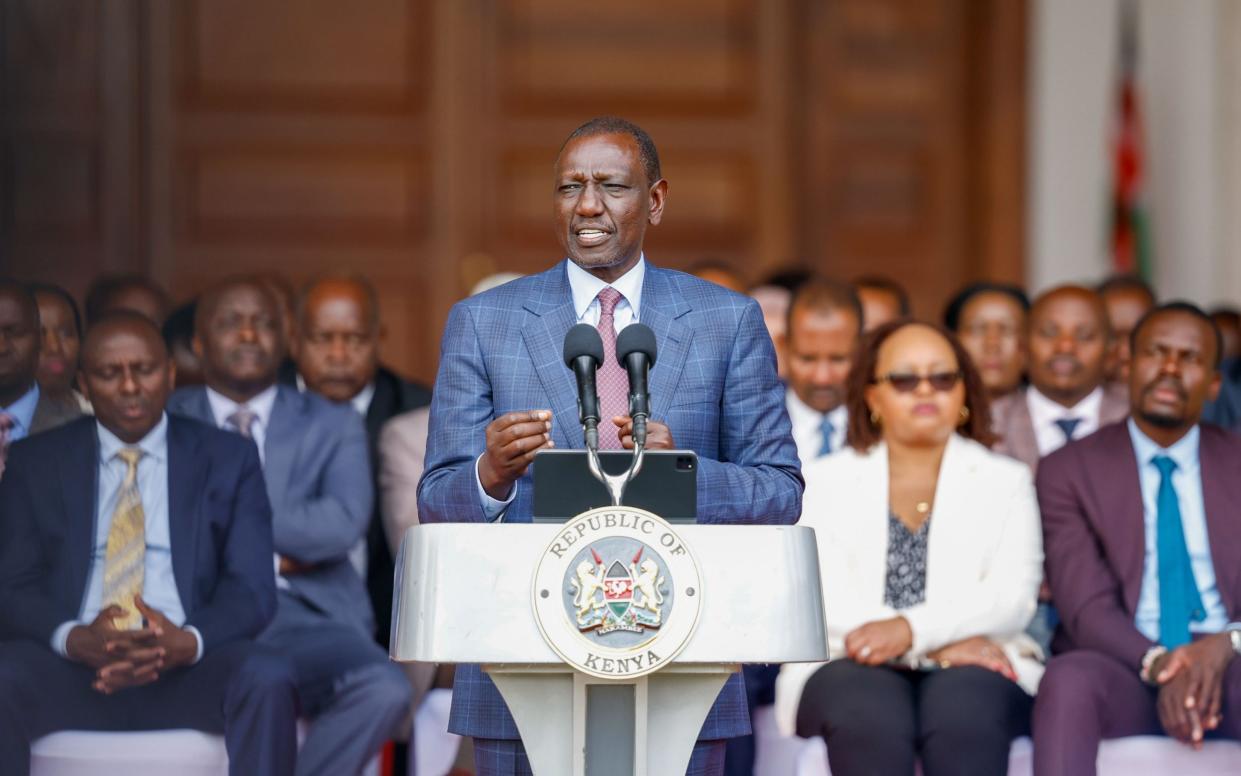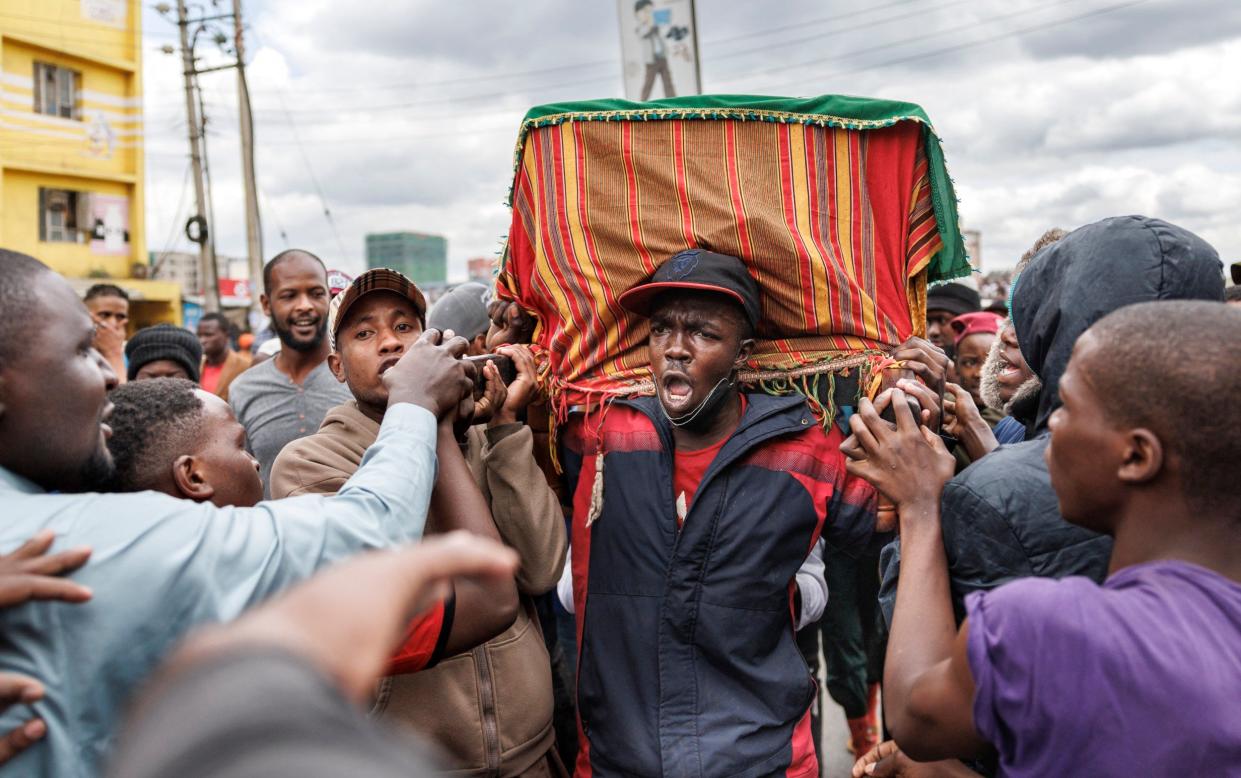How Gen Z protesters start a revolution in Kenya over tax rises

They were the generation that could be taken for granted – or so Kenya’s government thought.
When, earlier this month, young Kenyan professionals took to social media to call for a “Gen Z uprising” over proposed tax hikes, the inner circle of William Ruto, the country’s president, responded with thigh-slapping derision.
Kenya’s middle class youth had barely bothered to vote, the thinking went. It seemed unlikely that they would ever do more than whinge from the sidelines. They were just after TikTok views, scoffed Rachael Nyamai, an MP allied to Mr Ruto.
After protesters briefly seized control of parliament and set it ablaze on Tuesday and following a week of countrywide riots that have killed at least 27 people, such complacency has given way to panic.


Already forced into a humiliating climbdown over his tax policies, the president is now fighting for his survival. Fresh protests, this time to demand his resignation, have been called for next week. In an extraordinary display of his own vulnerability, Mr Ruto has had to order the army onto the streets to protect him from his own people.
Nor is it just Mr Ruto who is running scared, with protesters attacking the businesses, constituency offices and even the homes of MPs, who were forced to flee Parliament through an underground tunnel after its seizure.
Kenya, despite its reputation, is no stranger to protests and political unrest. Deadly violence, often inflamed by politicians stoking ethnic divisions, has often broken out at election time.
These protests are different, however, led by an organic and seemingly leaderless movement that has rendered the old ethnic divisions politicians used to manipulate meaningless.
For the first time, too, anger is directed at the entire political class, rather than just portions of it. There is for the first time a whiff of the atmosphere of the Arab Spring uprisings or the coloured revolutions that spread across former Soviet states 20 years ago.
“There is no greater danger than underestimating your opponent,” wrote the Chinese philosopher Lao Tzu, a truism that should be blindingly obvious to any self-regarding politician.
That Kenya may have reached a watershed is the result of Mr Ruto’s catastrophic underestimation of his opposition, which consists not of politicians, who have proved easy enough to co-opt, but of the middle class.
In order to pay off the vast debts his government inherited after coming to power in 2022 and in order to pursue a pro-poor agenda, Mr Ruto reckoned he could afford to alienate middle class Kenyans by ruthlessly taxing them.
It seemed a reasonable calculation to make. The middle class never liked Mr Ruto to begin with, viewing him as a populist strongman-in-the-making with a chequered record on human rights and corruption.
With just 17 per cent of Kenyans in salaried employment, the middle class also seemed electorally expendable. Mr Ruto won power by becoming the first presidential candidate to appeal beyond ethnicity to Kenya’s masses.
The president planned to double down on this strategy through expensive low-cost housing and subsidised fertiliser schemes that would be funded by tax rises primarily shouldered by the middle class, who – so it was believed – had too much to lose by taking to the streets.
But as salaried Kenyans saw their monthly pay packets shrink after the 2023 budget and then witnessed another sharp hike being proposed in the 2024 budget, patience snapped.

Yet Mr Ruto’s government seemed unable to take the threat seriously, failing to see the serious message that underpinned the social media memes which transformed cabinet ministers into yapping dogs.
The movement seemed too amorphous, leaderless and shadowy to take seriously, even when a poster advertising “Seven Days of Rage” that would culminate with plans to #OccupyParliament began to circulate widely online and the demonstrations started to grow.
The protesters on the streets were nothing more than a small rump of iPhone-wielding, selfie-taking Gen-Zers who would quickly fade away, predicted Kimani Ichung’wah, majority leader in the lower house of Kenya’s parliament.
“They come to the demonstrations by Uber,” he sneered in a televised speech. “Afterwards they go to KFC and eat chicken. They even drink bottled water.”
Once again, the political elite had miscalculated. Not only did the protests not fade away, they attracted to their ranks poorer Kenyans who are yet to see any benefits from a Ruto presidency to anybody but the political class.
Ostentatious Instagram videos showing Mr Ruto’s allies showing off their fleet of Range Rovers and expensive watches have done little to help the president show he is a man of the people. He did little to help his own cause either by flying to the United States in a private jet last month and appearing in public wearing a £2,600 belt – more than the average annual salary of a typical Kenyan.

The protesters also proved far more resilient and determined than the authorities anticipated. Some danced amid the tear gas, even picking up still fizzing canisters to smoke them, while others stood stock-still with their arms outstretched as they were soaked with pink chemicals fired from the water cannon.
Where the protests go from here is unclear. The movement behind them seems divided. Some quietly confess that the scenes in parliament were too redolent of the assault by Trump supporters on Congress in January 2020 for comfort. Not everyone agrees.
“I would say that the storming of the Bastille is a better comparison to make,” said Phyllis Ochieng, a pharmacist.
Whatever happens, despite the bloodshed and chaos, whether Mr Ruto survives the coming months or not, the protesters have already won.
Forced to withdraw the finance Bill which underpinned his proposed tax rises, Mr Ruto has effectively vetoed his own budget. It is a humiliating climbdown which will surely weaken his ability to rule.


